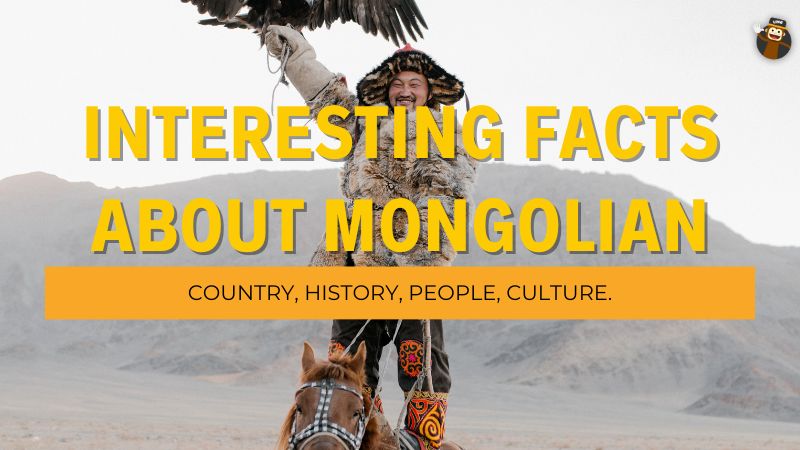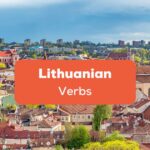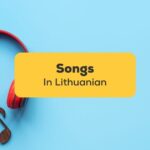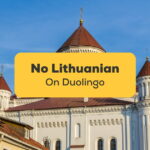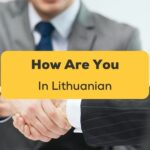Being the world’s third-largest sparsely populated country and second-largest landlocked country, Mongolia is bountifully endowed with a large landscape, vast semidesert, and diverse yet unique ethnic groups. Home to horse racing and rearing, nomadic tribes, and diverse culture, there are a thousand and one things to know about Mongolia. So, if you are planning to visit, read on to find out more interesting facts about Mongolia in today’s post!
Mongolia is popularly known as the ‘end of the Earth’ because of its vast, unspoiled landscape and unique sunny days. Learning about the interesting facts we will cover here will help you appreciate the place better and understand more how external factors influenced the Mongolian Language. If you are ready for that, keep reading below!
1. Geographical Facts
Mongolia is a country located in East Asia bordered by China in the South and Russia in the east. It is more like a plateau with an average elevation of 1528m. It has a landscape area of 603,909 square miles, making it bigger than the United Kingdom, Ukraine, and Italy. It is home to 3.3 million people, with almost half of the population living in Mongolia’s capital city, Ulaanbaatar.
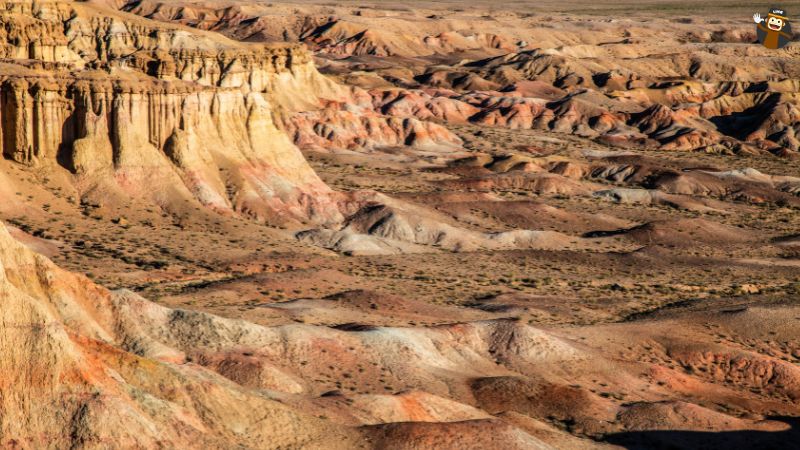
One remarkable thing about Mongolia is that it accommodates mountains, deserts, and grassy steppe. The highest mountain is the Altai mountains, found in the western and southern regions of Mongolia. It is also home to the fifth largest desert in the world, known as the Gobi desert spanning over 1000km of land.
Being such a big place, Dinosaur fossils were found in the Gobi Desert in the 1920s, and research shows that Mongolia was once roamed by Dinosaurs. Now, that’s crazy!
2. Climate
Due to its high elevation at 1,580 meters and latitude between 41 and 52° N, Mongolia experiences extreme climate conditions that differ depending on the city’s location. The country is extremely cold during winter, with the temperature dropping as low as −30 °C due to Serbia’s anticyclone. The provinces most affected during the cold winter are Khovsgol, Zavkhan, Eastern Dornod province, and other places. During summer, the case is the same. Certain areas in the country experience hot summers, which can sometimes be detrimental to the landscape and animals.
3. Language
Mongolian is the most widely spoken language with over a 5.2million speakers, and over 95% of Mongolians know how to speak the language fluently. Also, Mongol residents in the inner Mongolia of the People’s republic of China are also vast speakers of the Mongolian language.
Mongolian is a beautiful language that places emphasis on vowel harmony and allows consonant clusters. The language places priority on verbal and nominal stresses. In addition, the Mongolian Cyrillic alphabet is the accepted writing standard for the Mongolian language in Mongolia.
In Mongolian, the Khalkha dialect is the most widely used dialect for speaking the Mongolian Language, and it is written in both Cyrillic and traditional Mongolian Script. However, we also have the Chakhar dialect, which is prominently used in Inner Mongolia and some parts of outer Mongolia.
Although the Mongolian language is the country’s official language, other languages are being spoken in the country too. For example, the Oirat and Buryat languages are well spoken in Western Mongolia, although they are not recognized by international standards and stand a chance of becoming endangered.
When it comes to the most acceptable foreign language in Mongolia, Russian is one of the most spoken foreign languages, but as time changes, the English Language is gaining prominence amongst the Mongolians, and it is no longer strange to see Mongolians speaking the English Language fluently. However, Russian and Turkish are still spoken widely in Mongolia.
4. People And Culture
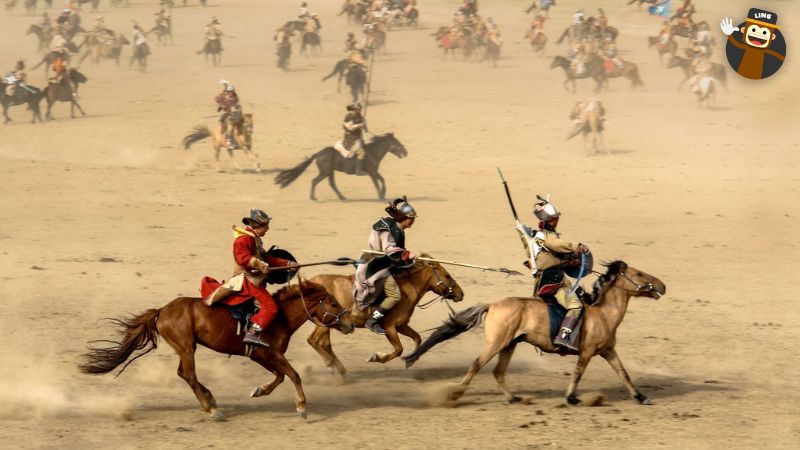
The Mongolian people are naturally warm and reserved people that value family relations and hard work.
Mongolia is known for its nomadic practices, and although it is not widely practiced like in the past centuries, there are still wide practices of animal rearing in the rural parts of Mongolia. The Mongolians focus on the five main livestock; horses, camels, goats, sheep, and cattle.
Religion
When it comes to religion, Shamanism and Buddhism are the two most popular religious practices in Mongolia. Also, Islam is seeing significant growth, with about 6% of Mongolians practicing Islam.
Food
Mongolian food is mainly based on Meat, Milk, and Spices due to their heritage of nomadic practice. Some of their cuisines worth trying are Buzz, which makes delicious and comes with enough meat, and Tsuivan (Mongolia’s traditional noodles garnished with vegetables and meat). For example, when you visit a Mongolian family, you will be offered Airag, fermented horse milk, and alcoholic beverages, which is considered disrespectful if refused.
Mongolian have some of the tastiest food in the world, and you will enjoy them.
Clothing
The deel is the traditional wear of the Mongolians, mostly worn on work days and special occasions. It is a loose, long gown with overlapping collars and girded with a belt. Each tribe has different ways of sewing and designing their deels. For example, nomads wear thick, plain deels that will serve them in both winter and summer.
Festivities
The biggest festival in the Mongolian culture is Naadam which is usually held from July 11th – 13th in the capital season. It is a time when the Mongolian tribe gets to enjoy, dance, and esteem their heritage High. Naadam involves racing, wrestling, archery competitions, and other games. Another festivity celebrated in Mongolia is Tsagaan Sar, known as the Mongolian Lunar year.
Nomadic Practice
Mongolia is known to have over 3 million animals, which currently outnumbers the population. There are five main animals being reared, but horses hold the highest prestige. Also, it is believed that Mongolian horsemen are among the best on earth. They have ancient expertise in caring for horses and have great pride in the number of horses they own. Not just that, you find different breeds of horses in Mongolian. Also, the takhi horse hails from Mongolia and is believed to be the only wild horse that has never been domesticated.
5. Politics
The Mongolian government operates on the semi-presidential political system where a prime minister is the head of government, and the cabinet and a president is the head of state. The prime minister exercises full executive authority while the President has limited executive authority.
In Mongolia, two major political parties dominate the government. They are; Mongolia’s People’s Party and the Democratic Party. Mongolia’s People’s Party is the largest group at the moment, with just 10 000 differences from the democratic party.
Another thing worth noting is that Mongolia became a part of the World Bank in February 1991 and celebrated its 30th anniversary in 2020.
Interesting Facts About Mongolia? Check!
As we come to the end of this article, I hope you were able to get a better insight into Mongolia and its diverse people. Like I said earlier, Mongolian is the country’s official language, and it will be great if you learn how to speak their language. However, because of Mongolian’s structural complexity, many language learning apps don’t offer resources for this. Our advice? Unlock your free lessons on the Ling App.

Learn Mongolian With Ling App
Ling App is dedicated to making any language novice become a fluent speaker in a short period. It comes with everything you will need to have a seamless learning experience ranging from gamified experience, structural and voice learning lessons, rewarding quizzes, and many resources. You can learn the Mongolian Language with Ling App today.
What are you waiting for? Download the Ling App on Play Store or App Store today!
